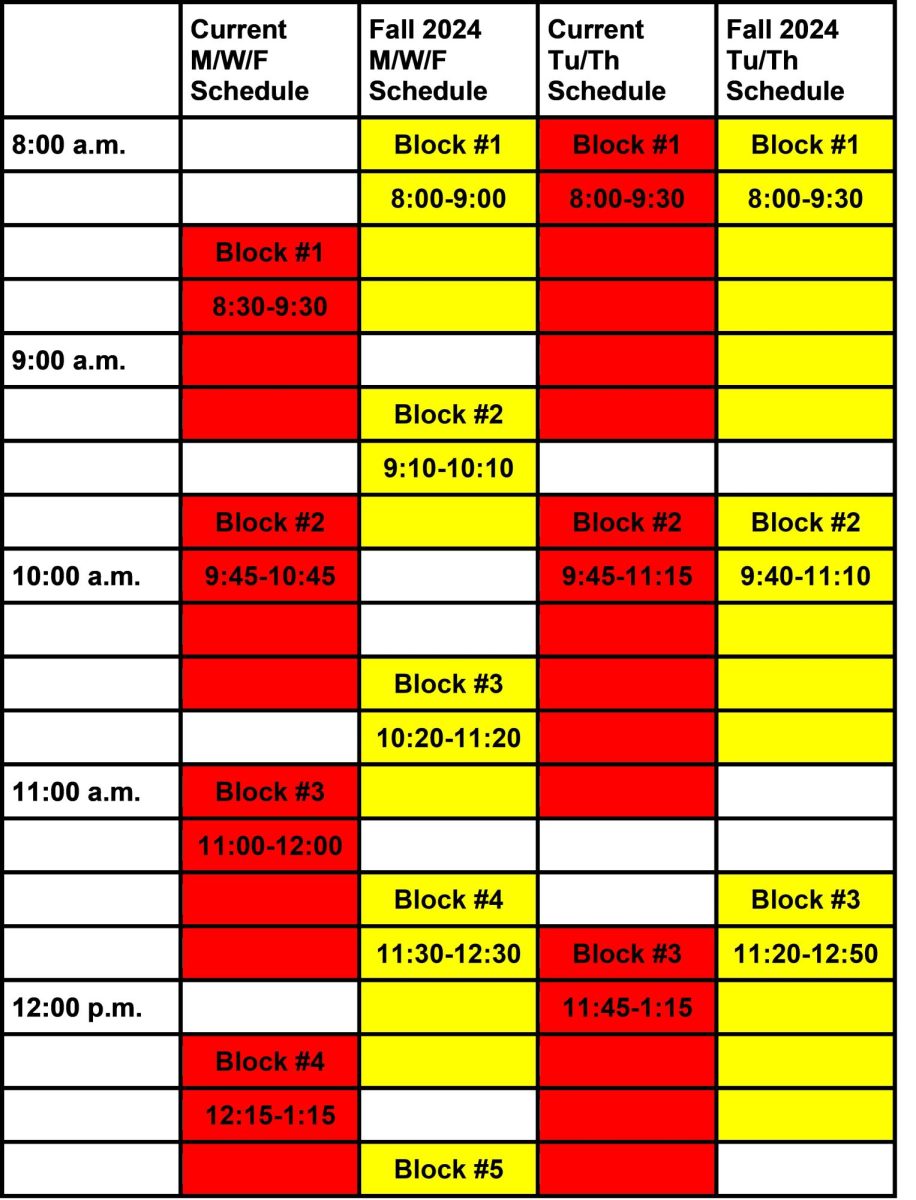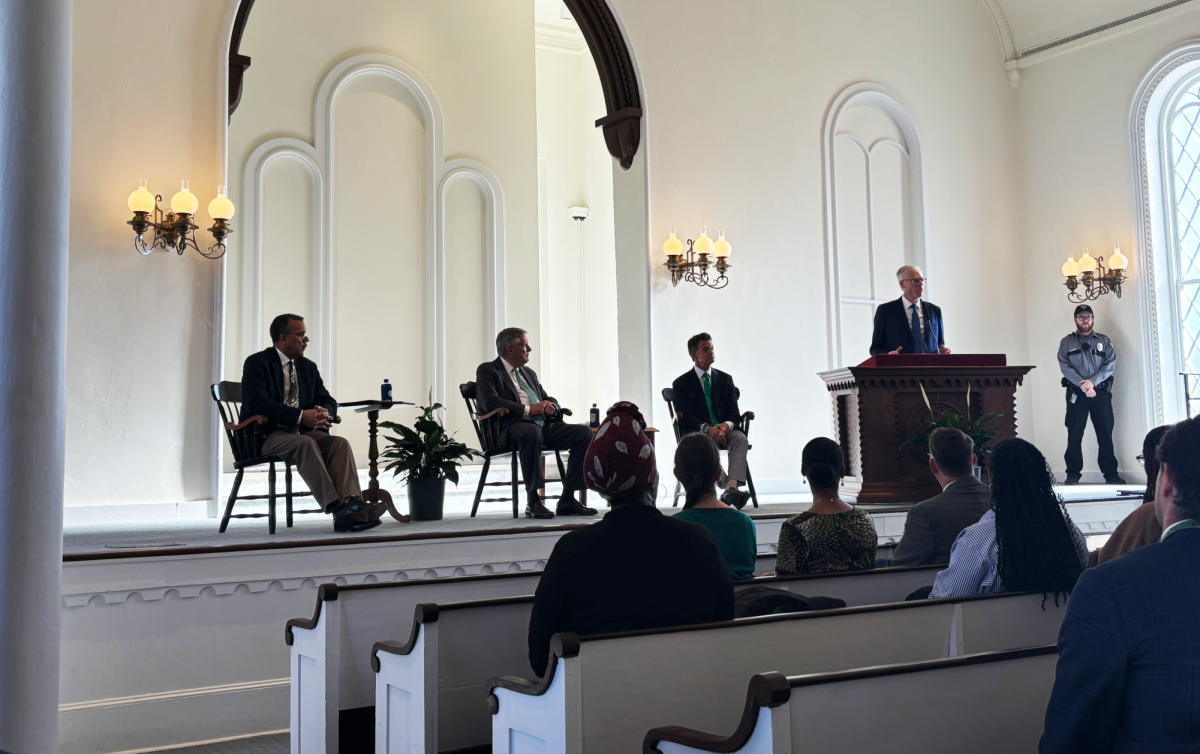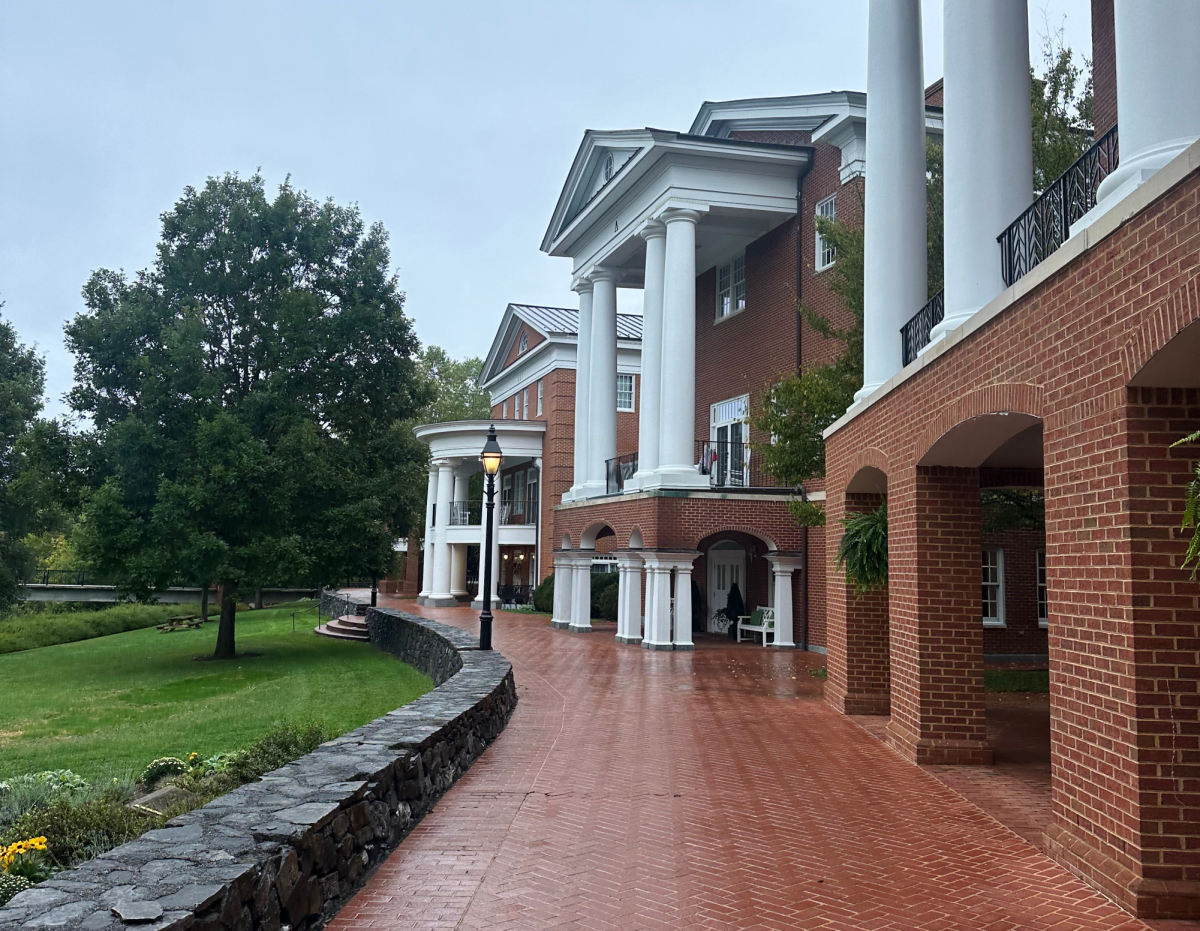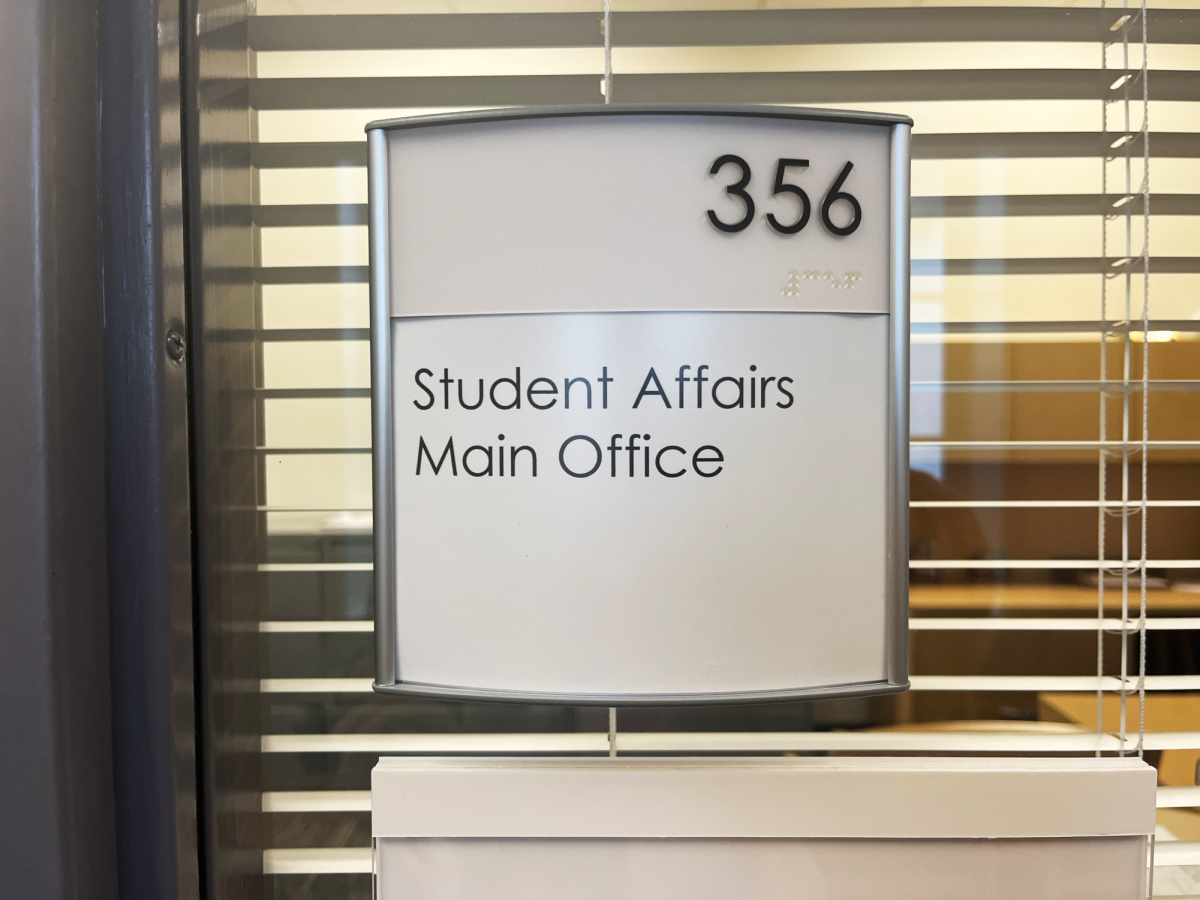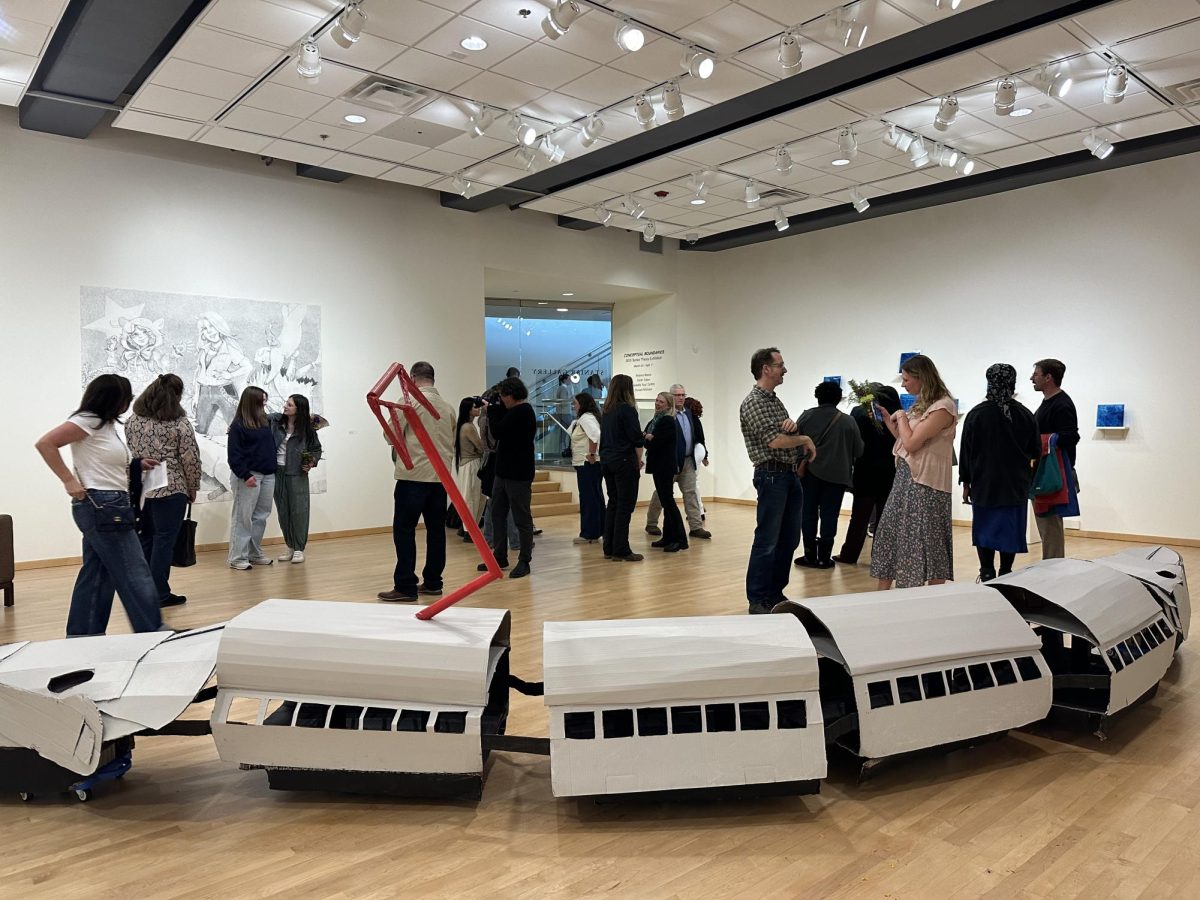A new schedule — one with an extra class block each day and 10-minute passing periods between classes — will start in fall 2024.
The schedule, approved by a faculty vote on Jan. 22, was designed to add more flexibility to the scheduling process and reduce the demand for limited classroom spaces, said Director of Education Studies Haley Sigler. But some students and professors say there are too many downsides to the new schedule to be worth the switch.
Sigler, who was appointed to the Academic Calendar, Scheduling and Registration Committee this fall, said many departments have suffered from a “classroom crunch” this year.
That crunch is seen in the Spanish classes that are being taught next to music rehearsal spaces in Wilson Hall, politics classes that are being held in a community room in upper-division housing, business classes that are meeting in an off-campus building on S. Jefferson Street, and more, she said.
The number of classrooms won’t increase until the new Williams School is opened in the summer of 2025, which means the only way to meet the demand for desks and chalkboards is to spread classes out across more time blocks throughout the day, Sigler said.
“A lot of this classroom crunch will be released when the C-School is finished and we have more classroom spaces,” Sigler said. “Until then, we have to release some of the pressure another way.”
The new schedule will have eight blocks of hour-long classes each Monday, Wednesday and Friday, starting at 8:00 a.m. and ending at 5:10 p.m., according to the Jan. 22 faculty meeting agenda. The current schedule only has seven blocks on each of these days, with classes starting at 8:30 a.m. and ending at 5:00 p.m.
The current schedule also has five blocks for 90-minute classes each Tuesday and Thursday. According to the agenda, the new schedule will have six blocks on these days, with the last one ending at 5:50 p.m. Two-hour studio classes, three and four-hour labs, sports’ practices, and music, theater and dance rehearsals will be largely unaffected.
To make space for the new class periods, passing periods between classes will be reduced from 15 minutes to 10 minutes.
Some are optimistic that the changes will not only open up more classroom space but also give students more freedom in creating their class schedules. The flexibility is especially important for student performers and athletes who need to keep their schedules open for evening rehearsals and practices.
“Right now, there are more class conflicts with practice than we’ve ever experienced before,” said Mike Dager, head coach of the women’s cross-country team. “Our hope is that adding a class block will help alleviate that to some extent.”
Sigler said department heads will determine how flexible the new schedule truly is as they spread their programs’ classes across the blocks. They will be encouraged to follow various guidelines, she said, such as encouraging students to take 8:00 a.m. classes by scheduling major requirements in those blocks.
Even if the scheduling flexibility becomes a reality, many are not convinced that the extra blocks are worth the shortened passing times.
Associate Professor of Theater Jemma Alix Levy said the 10-minute passing will not be enough time for professors or students to walk between the farthest corners of campus一let alone use the restroom or grab a meal一between back-to-back classes. She said she may feel pressured to end class early in order to have time to travel to and prepare for the next one.
“Part of the joy of going to a small liberal arts college is having access to professors, and often what that looks like is staying after class for five minutes to finish a conversation or ask a question,” Levy said. “So with this new schedule, we are really undercutting our students’ and professors’ abilities to actually put all of their efforts into all of their classes.”
Students agreed that losing those five minutes may change their daily routines.
“If I have classes back-to-back, the new schedule is going to be hard. I normally stay after class and ask questions to my professor, but that’s not going to happen now,” said Tanner Hurless, ’25.
Another possible outcome, Levy said, is that students will be perpetually late.
“My initial reaction to this plan was, ‘My students can already barely get to class on time, and this is going to make that so much worse,’” she said.
“It’ll feel like high school,” Riley Mitchelson, ’27, agreed. “We’re in college, and 15 minutes barely is enough right now, especially if you need to get breakfast or lunch.”
Students who work at campus dining facilities, including Mitchelson, said they can barely serve all their customers in the current 15-minute rush between classes. With 10 minutes, they think lines will get so long that some students will have to skip getting meals, snacks or caffeine pick-me-ups.
“We’ll either have less customers overall, or just more upset customers because they can’t get their drinks in time,” said Hollins Pierpoint, ’25, who works at the Tea House.
But administration members are optimistic that campus will adjust.
“As with anything new, there may be some glitches, but we expect this to be a positive development for students.” Fred Rodriguez, Interim University Registrar, said in an emailed statement.



